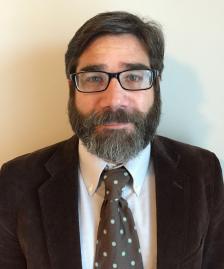L. Enrique Ramos-Santiago, Ph.D

Assistant Professor
Contact
Nieri Department of Construction and Real Estate Development
Office: Lee 2-211
Phone: 864-656-9889
Website: https://sites.google.com/view/ramos-santiagophd/home
Email: eramoss@clemson.edu
Education
Ph.D. in Urban and Regional Planning, Florida State University (2018); Master of Planning (MPL), University of Puerto Rico at Rio Piedras (2009); Master of Architecture, Tulane University School of Architecture (2004); Bachelors of Architecture, Tulane University School of Archticture (1993)
Courses
Bicycle & Pedestrian Planning; Urban Design; CRP Land Use
Dr. Ramos main research interests focus on sustainable transportation and sustainable urban planning and design. His most recent work lies at the intersection of land-use / built-environment attributes (LU.BE) and non-motorized multimodal travel behavior including transit patronage, walking, and biking. His doctoral dissertation examined the influence of LU.BE factors on bus/rapid-transit network interactions in the city of Los Angeles.
Enrique’s professional career also encompasses over 15 years’ experience as a professional architect and land-use planner in Puerto Rico and more recently in North Florida.
Faculty Research Development Program (Grant) 2019- [FRDP]: Intentions, Interactions, and Outcomes: a Case Study of Planners, Architects, and Developers of El Monte Renewal Project.
Dr. Ramos in his own words:
Hometown:San Juan, Puerto Rico. I was born, raised, and professionally engaged in the city and island-wide for most of my early professional development years. Coming from a unique and distinct Spanish-speaking Latin-American community within U.S. jurisdiction I am very interested and look forward to share the planning and architectural history of the Caribbean region.
What I like best about teaching at Clemson:
I look forward to start teaching at Clemson. Based on previous teaching experiences at Florida State what I most enjoy are engaged and curious students inspired to improve our built- and natural environments, advance community and individual development, and aim for the well-being of all.
Favorite urban planning movie:
‘Le mani sulla cittá’ (Francesco Rosi, 1963) is my favorite as it deals with elemental political/economic forces and underlying interests of key players involved in city-making several years before Molotch’s seminal growth-machine proposition (1976). Urbanized (Film First, 2017) is also a good documentary and introduction for planning students and enthusiasts that serves as a comprehensive survey of contemporary global urbanization issues, as well as their potential planning and design solutions. On the fiction side, Bladerunner (1982 version) would be my choice.
Advice for prospective students:
Maintain intellectual curiosity throughout your life and cultivate multidisciplinary interests as these will become effective professional tools in solving contemporary and future planning dilemmas.
When not teaching I . . .
ride my urban utilitarian bike in search of good quality human-scaled urban (or suburban) places to conduct some of my research activities; or explore the local environment with my family in particular its natural and urban-architectural heritage.
What students should take away from my classes:
An understanding that as planners they will be dealing in a dynamic, open and complex social-ecological-technological system that requires a multidisciplinary approach and critical thinking; that there exists a valuable and relevant urban planning and design heritage that can contribute in solving contemporary urban problems; that the ability to imagine and innovate in an utopian sense is as important as a practical and political grounding of feasible scenarios for effective planning interventions; and finally, that the ‘plan’ is not the objective, but a planning process that allows and informs individual, community, and institutional learning. Best part of the job:
Being able to explore and generate new and ideally useful knowledge for the profession, engage with topics I am passionate about, and contribute to advance sustainability.
Why I became an urban planner:
As a practicing architect I quickly noticed architecture’s limitations in solving pressing larger-scale aggregate urban and transportation problems in my native island, including uncontrolled sprawl, high automobile dependency and congestion, and associated social-economic-environmental negative consequences. Also, my diverse interests and multi-disciplinary curiosity inevitably led me to the planning profession, where all my interests and concerns with society, natural-environment, and built-environment can be theoretically accommodated and practically addressed.
Favorite Cities:
Old San Juan, New Orleans, Savannah, Washington DC / Paris, Florence.
If I wasn’t teaching urban planning I would be . . .
Musician, Film maker, and/or painter.
